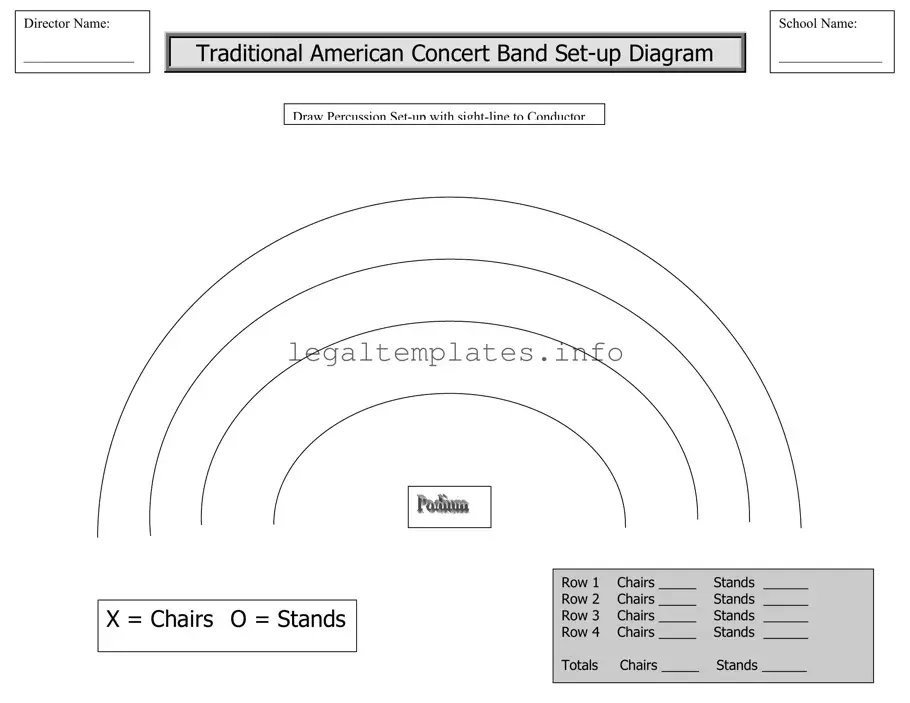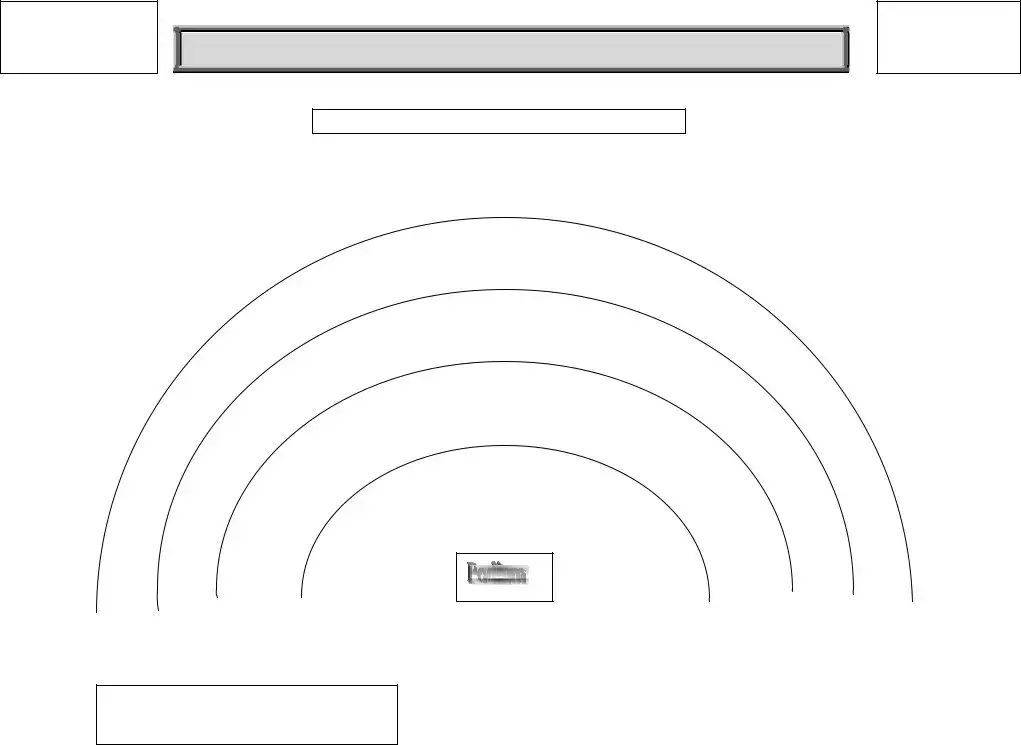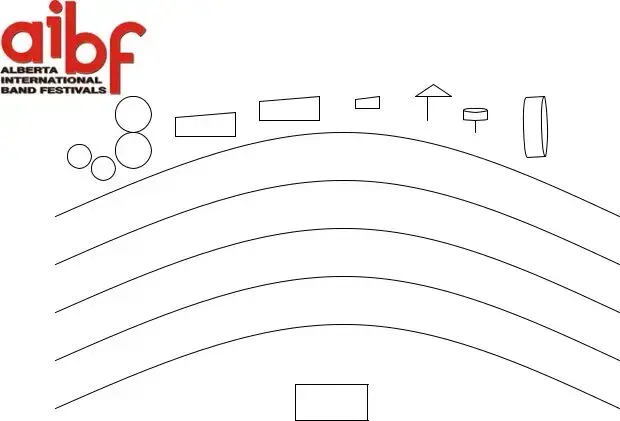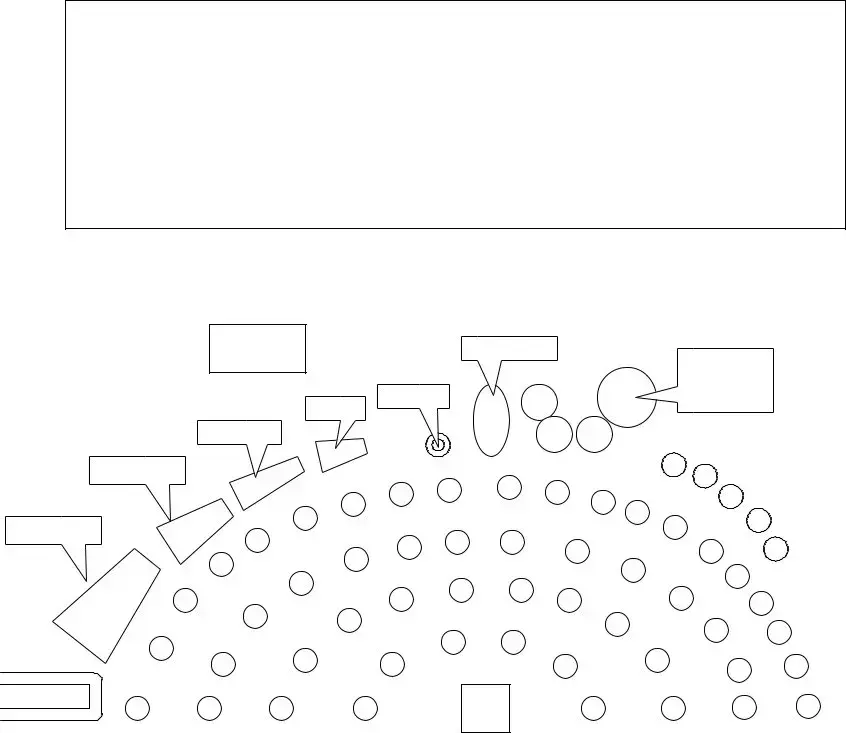The Orchestra Seating Chart, much like the Band Seating Chart, is a strategic plan for positioning musicians and their instruments on stage. It focuses on the layout of strings, woodwinds, brass, and percussion in relation to the conductor's podium. This ensures optimal sound balance and visual coordination, important for both rehearsal processes and live performances. The key difference lies in the specific instrument placement, adhering to orchestral standards versus band standards.
A Stage Plot for live music performances shares similarities with the Band Seating Chart by providing a visual representation of equipment and musician placement on stage. Designed for sound engineers and stage managers, it details the location of instruments, microphones, monitors, and other equipment, optimizing sound quality and allowing for efficient setup. Both documents serve crucial roles in preparation for music productions, ensuring all technical and spatial requirements are met.
The Theater Seating Plan, utilized in playhouses and opera settings, also aligns with the Band Seating Chart by plotting seat arrangements and stage views. Although it primarily caters to the audience's perspective, ensuring clear sightlines to the stage, it indirectly influences performer placement and stage design. Both plans consider the importance of visual and acoustic elements, aiming to enhance the overall experience for attendees and participants alike.
Classroom Seating Arrangements often resemble Band Seating Charts in their purpose to organize spaces that promote effective engagement and communication. Educators arrange seats based on various pedagogical goals, such as fostering collaboration or focusing attention towards the front. Similarly, the Band Seating Chart arranges musicians to facilitate auditory cohesion and directorial visibility, underlining the importance of strategic placement in performance and learning environments.
The Event Layout Plan, crucial for organizing large gatherings like weddings or conferences, parallels the Band Seating Chart in its attention to detail in spatial organization. It outlines the placement of tables, chairs, stages, and other key elements to ensure smooth flow and accommodate guests' needs. Such planning is vital for both types of documents to create inviting and functional spaces that cater to their respective audiences.
The Film Set Plan, which details the arrangement of cameras, lighting, and action spaces for movie productions, shares a conceptual similarity with the Band Seating Chart. Both are instrumental in orchestrating the positions of participants and equipment to achieve the desired artistic outcome. Although one focuses on audio performance and the other on visual storytelling, each relies on careful planning to manage complex setups.
Sports Team Formations and playbooks, though not typically associated with performance arts, echo the strategic essence of the Band Seating Chart. Coaches diagram player positions to maximize team strengths and exploit opponents' weaknesses. This strategic placement is akin to arranging musicians in a manner that optimizes sound quality and ensemble cohesion, highlighting the universal significance of tactical organization in group dynamics.
The Conference Room Layout, designed for meetings and workshops, shares the Band Seating Chart's goal of facilitating effective communication and interaction among participants. Whether arranging chairs around a boardroom table or positioning musicians to face the conductor, both setups consider the importance of sightlines, acoustics, and accessibility, crucial for the success of collaborative endeavors.



